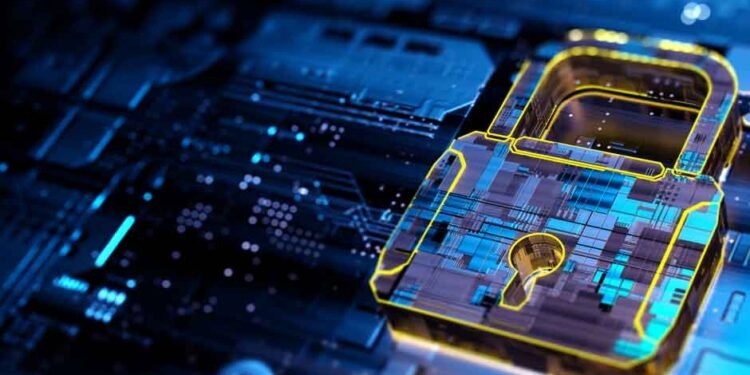In the ever-evolving realm of cybersecurity, two terms have gained prominence recently: EDR and MDR. But what exactly are they, and how do they differ? Dive in to unravel the mystery.
Introduction to EDR and MDR
The world of cybersecurity can sometimes seem like a never-ending maze of acronyms. But understanding these terms is crucial for businesses aiming to bolster their cyber defenses. Here, we’ll simplify things.
What is EDR?
EDR, or Endpoint Detection and Response, is a solution primarily focused on endpoints—devices such as computers, tablets, and smartphones. It monitors these endpoints for potential threats, detects those threats, and takes immediate action. Think of EDR as your vigilant security guard, keeping an eagle eye on all the doors and windows of your digital home.
What is MDR?
MDR, or Managed Detection and Response, offers a more comprehensive solution. It not only focuses on endpoints but also provides an ongoing management service. With MDR, you’re not just getting a security guard; you’re getting an entire security team that constantly watches, analyzes, and responds.
Key Functionalities
Let’s get a bit deeper into what these services can do.
EDR Functionalities
Continuous Monitoring: EDR solutions provide real-time surveillance of all endpoints.
Threat Detection: They can identify both known and unknown threats, thanks to advanced analytics.
Instant Response: Upon detecting a threat, EDR takes immediate action, either alerting the necessary parties or neutralizing the threat directly.
MDR Functionalities
Full-spectrum Monitoring: MDR monitors more than just endpoints—it keeps an eye on the entire network.
Advanced Threat Hunting: Uses sophisticated techniques and intelligence to actively search for threats.
Incident Response: In the event of a security incident, MDR provides comprehensive response measures, including recovery actions.
The Goals Behind EDR and MDR
Goals of EDR
In the digital age, where cyber threats lurk at every corner, Endpoint Detection and Response (EDR) emerges as a beacon of hope, a protective shield for organizations of all sizes. With its roots deeply anchored in ensuring robust cybersecurity, EDR is crafted with specific objectives in mind:
Rapid Detection
At the heart of EDR is its uncanny ability to swiftly recognize potential threats. This speed is of the essence, especially in a landscape where even a few seconds can mean the difference between a thwarted attack and a significant breach. The primary aim is simple yet profound: identify and intercept cyber threats before they get an opportunity to wreak havoc. Just like a vigilant sentry, EDR remains on constant alert, ensuring that threats—whether old, new, or evolving—are spotted promptly.
Minimized False Positives
In the world of cybersecurity, a false alarm can be just as detrimental as a missed threat. Constant alerts that turn out to be harmless can lead to ‘alert fatigue’, where real threats might be overlooked due to the sheer volume of false alarms. EDR prioritizes accuracy, ensuring that its focus remains unwaveringly on genuine threats. By minimizing these false positives, EDR not only maintains the trust of its users but also ensures that resources aren’t wasted chasing after non-existent threats.
Automated Responses
Human intervention, while valuable, can sometimes introduce delays or errors, especially when rapid response is needed. EDR understands this and thus champions the cause of automation. Once a threat is identified, EDR systems are pre-programmed to spring into action—be it isolating the affected endpoint, deleting malicious files, or even initiating a system-wide scan. This automation ensures that potential breaches are dealt with instantaneously, reducing the window of vulnerability and enhancing the overall efficiency of the threat response process.
Goals of MDR
In a world constantly bombarded by cyber threats, Managed Detection and Response (MDR) stands tall as a comprehensive solution, aiming to address the multifaceted challenges of modern cybersecurity. MDR is not just about reacting; it’s about envisioning, strategizing, and evolving. Below are its core objectives:
Holistic Protection
MDR’s approach to protection is akin to a fortress safeguarding a city, ensuring no wall is left unguarded. It’s not just about individual devices or isolated networks; it’s about the entirety of an organization’s digital infrastructure. From servers humming in data centers to laptops in remote offices, from cloud applications to on-premises databases – MDR’s goal is to offer a seamless shield of defense across this vast digital expanse. It comprehends that in today’s interconnected world, a vulnerability in a single component can compromise the whole system. Thus, the protection is all-encompassing, leaving no stone unturned.
Proactive Defense
While traditional cybersecurity measures often operate in a reactive mode—waiting for threats to manifest before addressing them—MDR believes in taking the fight to the enemy. It doesn’t just passively wait; it actively hunts. By continuously monitoring network traffic, analyzing patterns, and leveraging threat intelligence, MDR is on a relentless quest to uncover potential threats, often nipping them in the bud before they can flourish. This proactive stance ensures that threats are identified and neutralized, often even before they become discernible.
Expert Analysis
Technology alone, no matter how advanced, may not always suffice. Human expertise, with its intuition, experience, and analytical prowess, plays a pivotal role in MDR’s arsenal. When anomalies are detected or breaches occur, a team of cybersecurity experts dives deep into the heart of the issue, dissecting the threat, understanding its origins, and strategizing on countermeasures. But it’s not just about addressing the immediate threat. This expert analysis also focuses on drawing insights from every incident, translating them into actionable recommendations, and ensuring that the organization’s defenses are continually refined and fortified.
In summation, MDR isn’t just another cybersecurity solution. It’s a dynamic, evolving entity, always adapting and always striving for perfection. It understands the ever-changing nature of cyber threats and, therefore, commits to a journey of constant vigilance, innovation, and enhancement. Through its holistic protection, proactive stance, and expert-backed analysis, MDR ensures that organizations can confidently navigate the treacherous waters of the digital world.
Tools Associated with EDR and MDR
EDR Tools
Behavior Analytics: Understand typical user behavior to spot anomalies.
Forensic Tools: Dive deep into incidents to uncover how they happened.
Automated Scripts: Quickly respond to detected threats.
MDR Tools
SIEM (Security Information and Event Management): Provides real-time analysis of security alerts.
Network Detection Tools: Monitor network traffic for malicious activity.
Threat Intelligence Platforms: Stay updated on the latest threats and how to counter them.
The Main Differences between EDR and MDR
The cybersecurity realm often presents a range of solutions, among which EDR and MDR are prominent choices. At their core, both are designed to protect and respond to threats, yet they approach this goal from different perspectives.
EDR, or Endpoint Detection and Response, as the name suggests, primarily zeroes in on ‘endpoints’. These endpoints are essentially the various devices connected to a network, such as computers, smartphones, and tablets. The core philosophy behind EDR is to constantly monitor these devices for any unusual or malicious activities. Once these activities are detected, EDR systems are designed to take automated actions. This could be anything from isolating the affected device to prevent the spread of malware, to notifying system administrators about potential security breaches. The advantage here is the speed of response, given that these actions are often pre-programmed and happen almost instantaneously once a threat is detected.
On the other hand, MDR, which stands for Managed Detection and Response, offers a more holistic approach. Rather than focusing exclusively on endpoints, MDR seeks to provide a comprehensive protective shield over the entire network. This means that it not only watches over individual devices but also oversees the interactions and data transfers that happen within the network. One of the standout features of MDR is ‘active threat hunting’. Instead of waiting for threats to manifest, MDR services proactively search for signs of malicious activities or vulnerabilities, aiming to address threats even before they become active. Additionally, MDR often comes bundled with expert analysis. This means that in the event of a security incident, cybersecurity experts delve into the issue, providing insights, recommendations, and strategic response measures tailored to the specific threat.
In summary, while both EDR and MDR are geared towards ensuring cybersecurity, they differ in their areas of focus, methodologies, and the depth of protection they offer. EDR is more about rapid, automated responses centered around devices, whereas MDR offers a broader net of protection, combining proactive measures with expert intervention.
Which is Right for Your Organization?
There’s no one-size-fits-all answer. Smaller organizations with limited IT resources might gravitate towards EDR for its automation. Meanwhile, larger organizations or those with sensitive data might opt for MDR’s comprehensive coverage. Always assess your specific needs.
Conclusion
Whether you’re considering EDR or MDR, the key is to understand your organization’s specific vulnerabilities and needs. Both offer valuable tools in the fight against cyber threats. But remember, in this digital age, being proactive in your defense strategy is not just beneficial—it’s essential.












